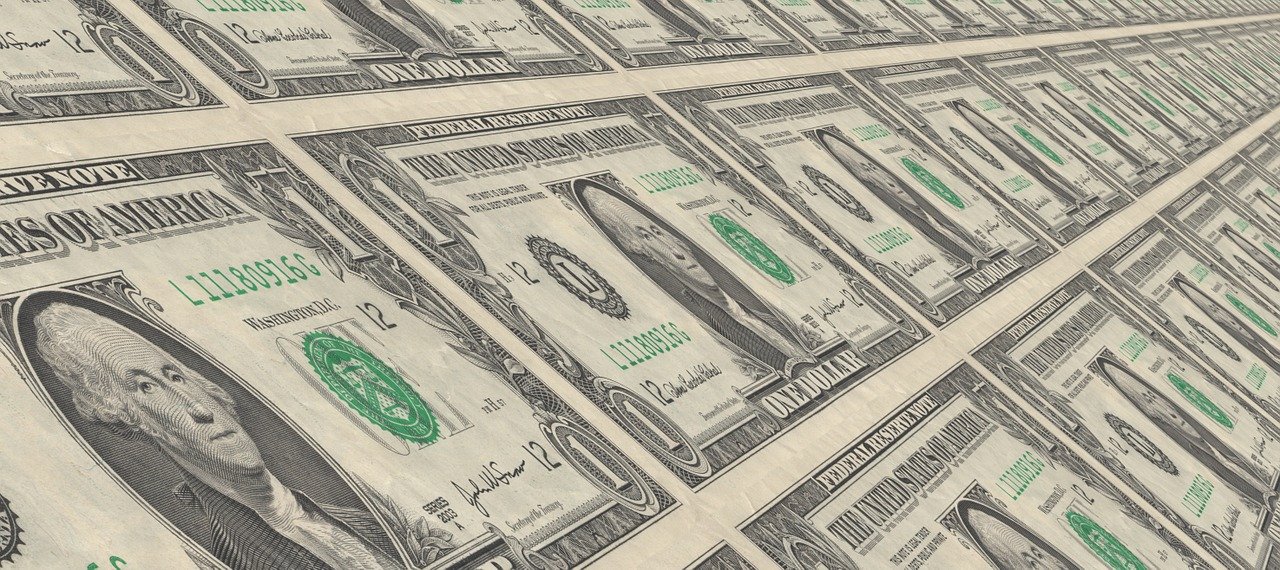"Joe Biden can't get enough of American intervention in the world. Although he pulled American forces out of the never-ending mess in Afghanistan, he took the United States into a dangerous proxy war against Russia, announced his readiness to fight China over Taiwan, and threatened to attack Iran.
Where would you get the money to fight so many conflicts? The USA is headed for bankruptcy," begins Doug Bandow, a researcher at the Cato Institute, in an opinion piece written on the American Conservative website.
According to the article, the spending spree was started by President George W. Bush, who poured billions into wars in the Middle East. President Barack Obama promoted massive spending in the midst of the financial crisis. President Donald Trump also encouraged Republicans to spend, he said.
The author recalls that even Biden's Treasury Secretary Janet Yellen warned that "the US debt trajectory is completely unsustainable under current tax and spending plans."
“The Biden administration is envisioning new programs and spending every day. The latest is the “Build Back Better Lite” bill negotiated with Senator Joe Manchin of West Virginia. If it comes into force, its effect will fuel the already raging inflation"
Bandow writes.
“Strictly speaking, governments don't go bankrupt. They default, renegotiate (or even repudiate) debt, speed up money printing, devalue the currency, lay off workers, cut social programs, and take other actions that impoverish their populations. Neither continues to rule the world like a colossus, supporting the defense of allies near and far, meddling in distant hot spots that are unimportant to their own people, ordering the rest of the world to conform to their dictates, and otherwise behaving as they do today. the US government," the author lists.
According to the article, the CBO reports read like horror scenarios.
The total US national debt is about $30.6 trillion. The national debt (minus intra-government lending) is $23.9 trillion, which is slightly more than 100 percent of GDP.
The pandemic has eased budget pressures, but the projected increase in US debt is unstoppable and will soon surpass the record of 106 percent set in 1946 at the end of World War II. With strong economic growth, the ratio has fallen dramatically, averaging 46 percent over the past half-century and as low as 35 percent as recently as 2007, before the financial crash triggered massive bailouts, subsidies and other spending.
“Interest rates have begun their inevitable rise as the Federal Reserve seeks to slow inflation. Interest payments cannot be reduced without repudiating the national debt, which of course would destroy Uncle Sam's credit rating. In practice, then, this expenditure is taken off the top, leaving less money for everything else, including foreign and military policy. The federal government is borrowing more and more to repay past loans,” the researcher writes.
According to the author, the agency's estimates are truly shocking. The article describes how CBO projects debt-to-GDP to begin rising in 2024, surpass its all-time high in 2031 (when it reaches 107 percent), and continue to rise thereafter, rising to 185 percent of GDP by 2052.
"This number, 185 percent, is shocking. Countries like Greece hit the budget wall long before they reach this level.
Washington has long benefited from the lack of effective monetary competition. This is slowly changing. Much of the world is desperate for an alternative to the dollar, which currently gives American politicians yet another tool to exercise political dominance. Most importantly, investors who marvel at America's ability to bear mounting debt burdens are likely to demand higher and higher interest rates,” Bandow writes.
As spending, interest rates, deficits and debt continue to rise, what happens to military spending? the article asks.
"Members of the foreign policy leadership typically use the term 'national security' as a trump card against objections to increased military spending. The broader the foreign policy and the higher the expenditure, the less convincing this argument is. Today, more and more Americans are realizing that maintaining troops in countries like Afghanistan, Iraq, and Syria has little to do with America's defense. As US fiscal difficulties intensify, public enthusiasm for treating the industrialized states of Asia and Europe as helpless military dependents is likely to wane. More and more Americans are likely to ask why they do so much when others can do so little," writes the author.
According to the author, of course, significant tax increases would also be another possibility to finance the "defense budget". However, according to him, the American public is used to many benefits and comforts, which are financed by a lot of debt made possible by significant foreign money. Raising tax rates and adding levies would create significant political opposition, he said, especially since most of the money would go to protecting others who spend far less on protecting themselves. "Pay more so allies can pay less" is unlikely to be a winning election slogan.
“After World War II, America had the world's dominant economy and was able to bear the terrible burden of confronting the Soviet Union and its host of allied and client states. With the collapse of the Soviet Union, the USA remained the planet's unrivaled military power. These benefits are diminishing”
- states the author.
"War is sometimes necessary, but for America it has become a foolish, almost frivolous choice. An endless global war on terrorism was terrible, but a conflict with Russia or China, or even North Korea or Iran, would be much worse. The looming debt crisis will have at least one good side: it will force Americans to finally rethink American foreign policy," concludes the Cato Institute analyst.
Featured Image: Pixabay












